
This week, the US patent office issued 6,757 patents. Each patent adds a little something new to the human knowledge base. As we cannot list all six thousand, the PatentYogi team has selected the six most interesting patents.
A hacker-proof internet
Patent number: US 20160105439
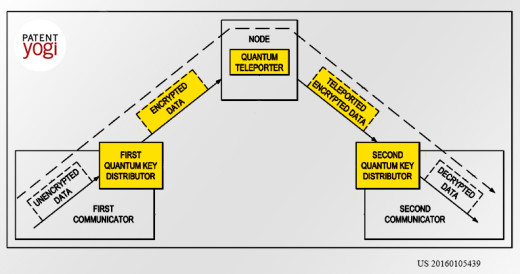
A huge problem with the internet is that sensitive information sent from one computer to another may be compromised at intermediate servers.
This may happen when an intermediate server has been hacked and any traffic through it becomes accessible to hackers.
To solve this problem, Boeing has turned to quantum communication.
The information bits to be transmitted is intermixed with a stream of quantum bits in a secret pattern. The quantum bits do not carry any information but are used to monitor any unauthorized access.
At each node along the transmission route, the quantum bits are examined to check whether their entangled state has collapsed. This is an indication that an unauthorized access has taken place.
Once a hacked intermediate server is detected, all traffic is routed away from that server thus protecting information from hackers.
Boeing plays with legos
Patent number: US 9,301,401

Carbon nanotubes are excellent for use as conducting paths in electronic circuits. But fabrication of devices using carbon nanotubes is prohibitive in terms of time and cost because the nanotubes need to be individually positioned to form electrical connections.
This is similar to building a structure with a set of lego blocks which need to be put in place one by one.
Now imagine if you could just dump all lego blocks together and they all self-assembled together to form the desired structure.
That’s exactly what Boeing has achieved with this patent.
The invention uses the attraction force of chemical bonds to cause nanotubes to automatically place themselves in between contact terminals of a circuit.
Through a chemical process, the ends of the nanotubes are attached with a functional group to yield functional nanotubes.
A fluid matrix of the functional nanotubes is then poured over a substrate containing the semiconductor device. The substrate may have contact terminals which are not yet connected to form the complete circuit.
Once the functional nanotubes come in contact with the substrate, the ends of the nanotubes are attracted to the contact terminals and adhere. This forms the required electrical connection without any separate aligning force.
YouTube Red on steroids
Patent number: US 20160105701
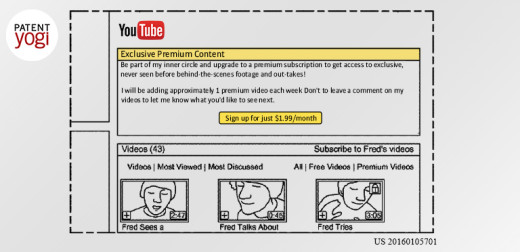
Now, Google plans to expand the service with multiple bundled channels containing videos from multiple providers.
The bundled channels will include videos selected according their type, viewing history, ratings, and similar factors. Further, the system will dynamically determine a price for the bundled channels based upon these factors. YouTube Red is currently available for $10 per month. However, the price of each bundled channel will vary based on the content included in the channels.
The resulting subscription revenue will be distributed to the various providers of the videos in the channel based on factors such as viewer interest, ratings, length, or the like.
When users subscribe to the bundled channels, they will get advertisement free delivery of videos along with additional benefits like exclusive content.
The system may also allow YouTube partners to provide subscription based services to viewers directly.
Telepresence tech gets an upgrade
Patent number: US 20160105640
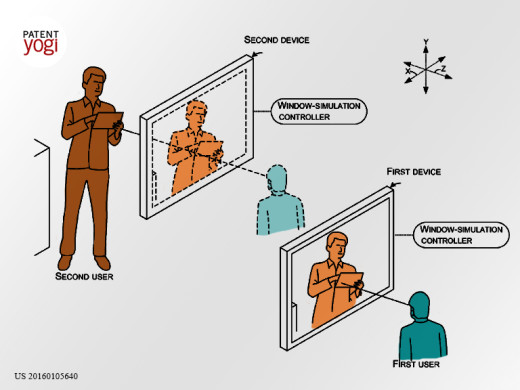
The system includes a display device (such as a flat panel digital display) that displays an image which appears to be at a point behind the flat panel digital display. When combined with a similar, but remotely located companion display device, the display device can look to the user like a pane of glass (e.g., a window) except that when the user looks through the display device, the user sees a scene in another part of the world and vice versa.
The system accomplishes this by employing a combination of a steerable array of beam-deflecting facets with a large area camera that has low etendue (e.g., relative angles of light rays are generally conserved during refraction and/or reflection by the device).
NASA working to improve engines
Patent number: US 20160104831
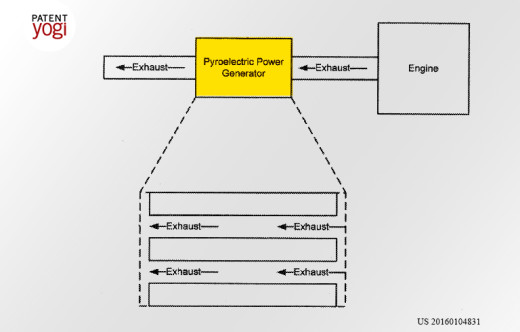
NASA plans to use pyroelectricity to minimize energy lost. Pyroelectricity is the ability of certain materials to generate surface charge and build a temporary voltage when they are heated or cooled. A pyroelectric material can be repeatedly heated and cooled (analogous to a heat engine) to generate usable electrical power. It is calculated that a pyroelectric material in an Ericsson cycle could reach from 50 percent to between 84 and 92 percent of Carnot efficiency.
The technology might be useful to generate electricity at a large scale by harvesting energy from massive thermal cycles. So, this could become a major renewable power source in the future.
Detecting malware with energy
Patent number: US 20160098561
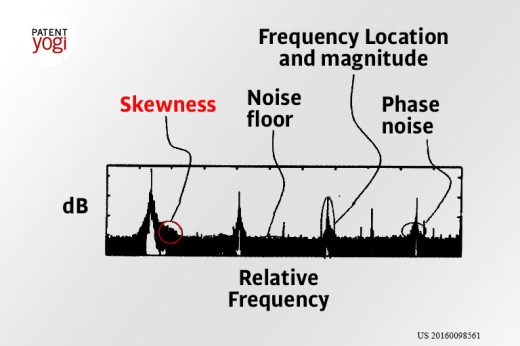
This patented invention analyzes radiated emissions from a device to identify unintended emissions which are used to detect and classify malware on the device. The invention is capable of automated detection, locating, disqualification and even temporary or permanent disablement of compromised devices.
Therefore, the invention helps in a separate, isolated, portable, unobtrusive, non-contact, and/or attachment-free method of detecting malware.
Get the TNW newsletter
Get the most important tech news in your inbox each week.
